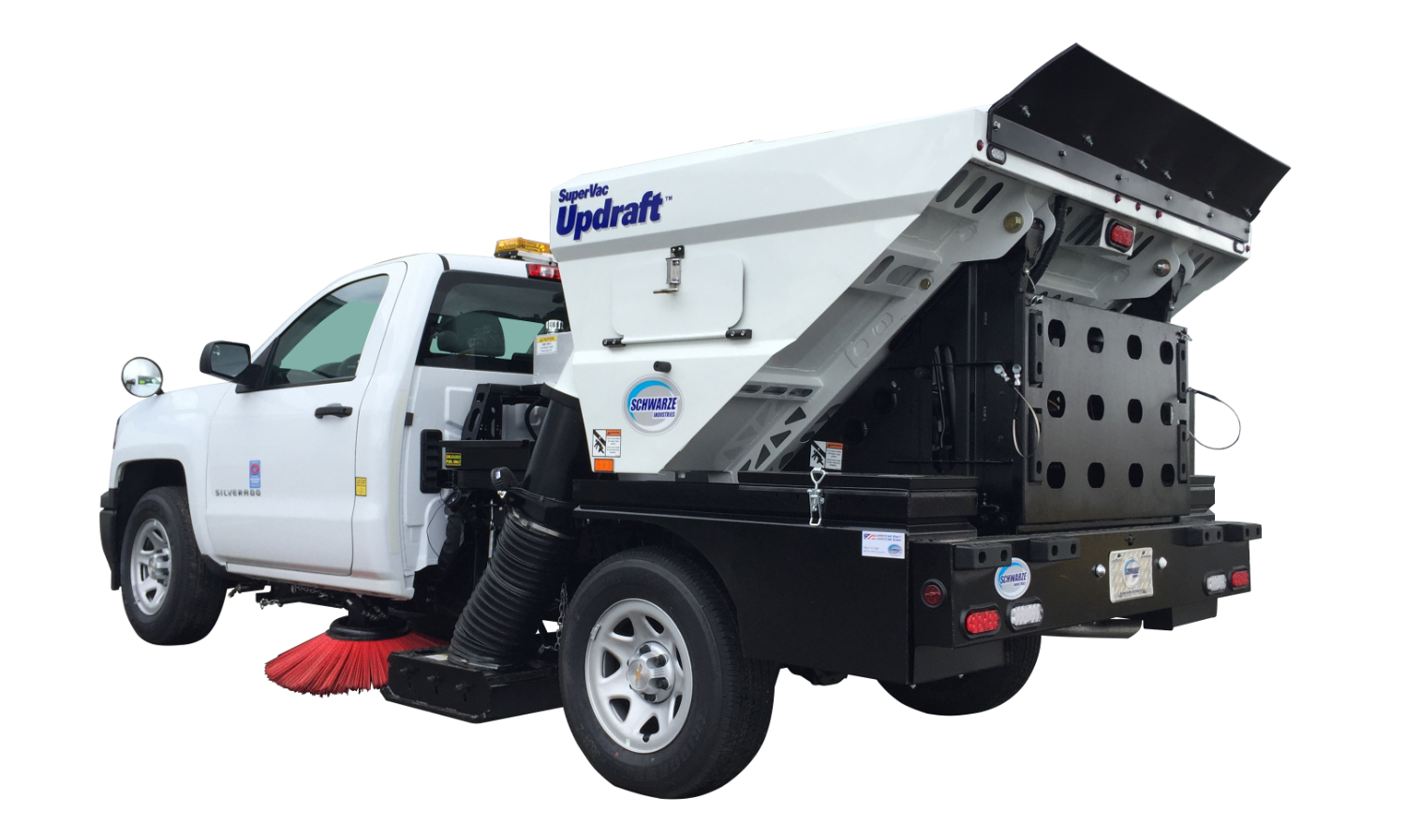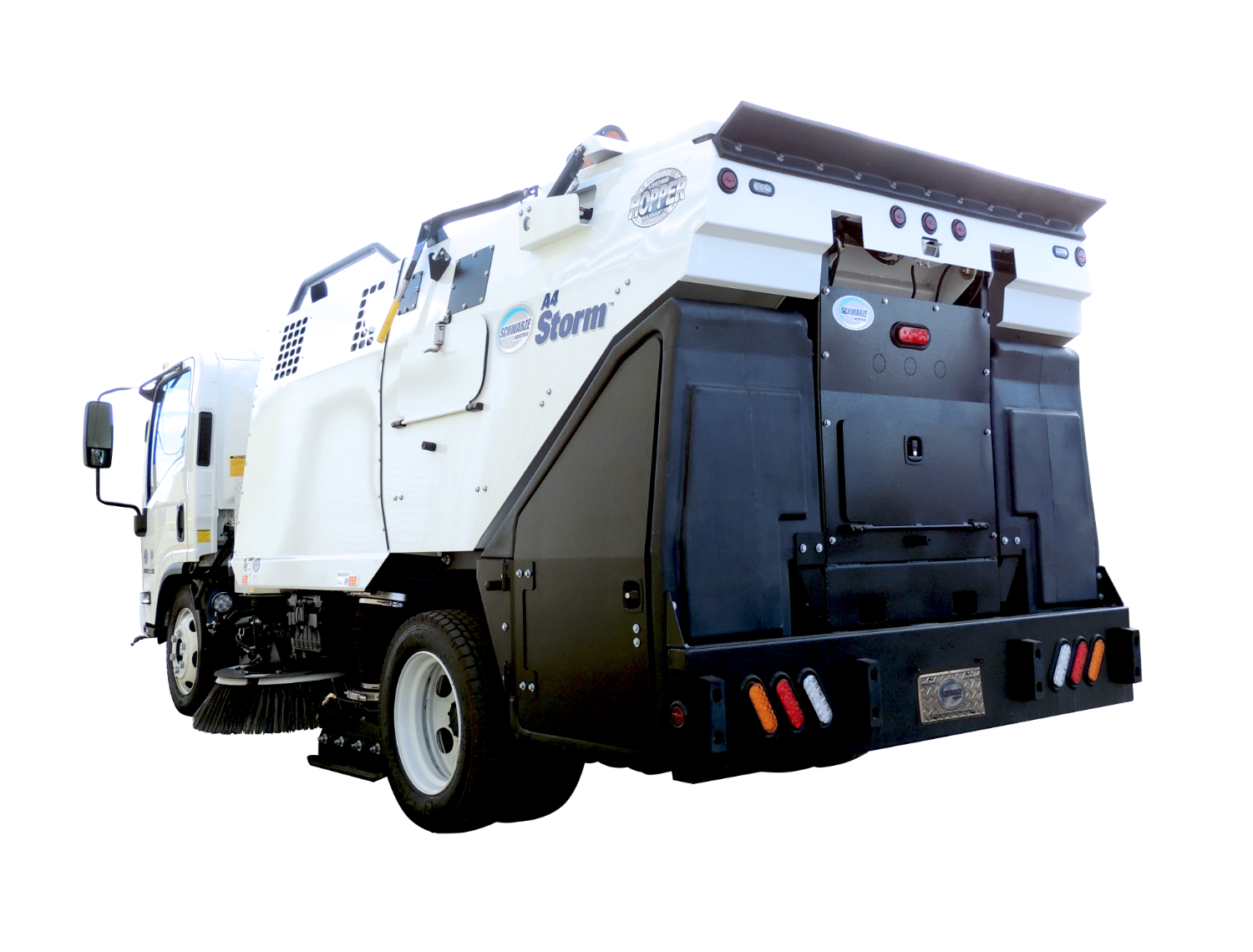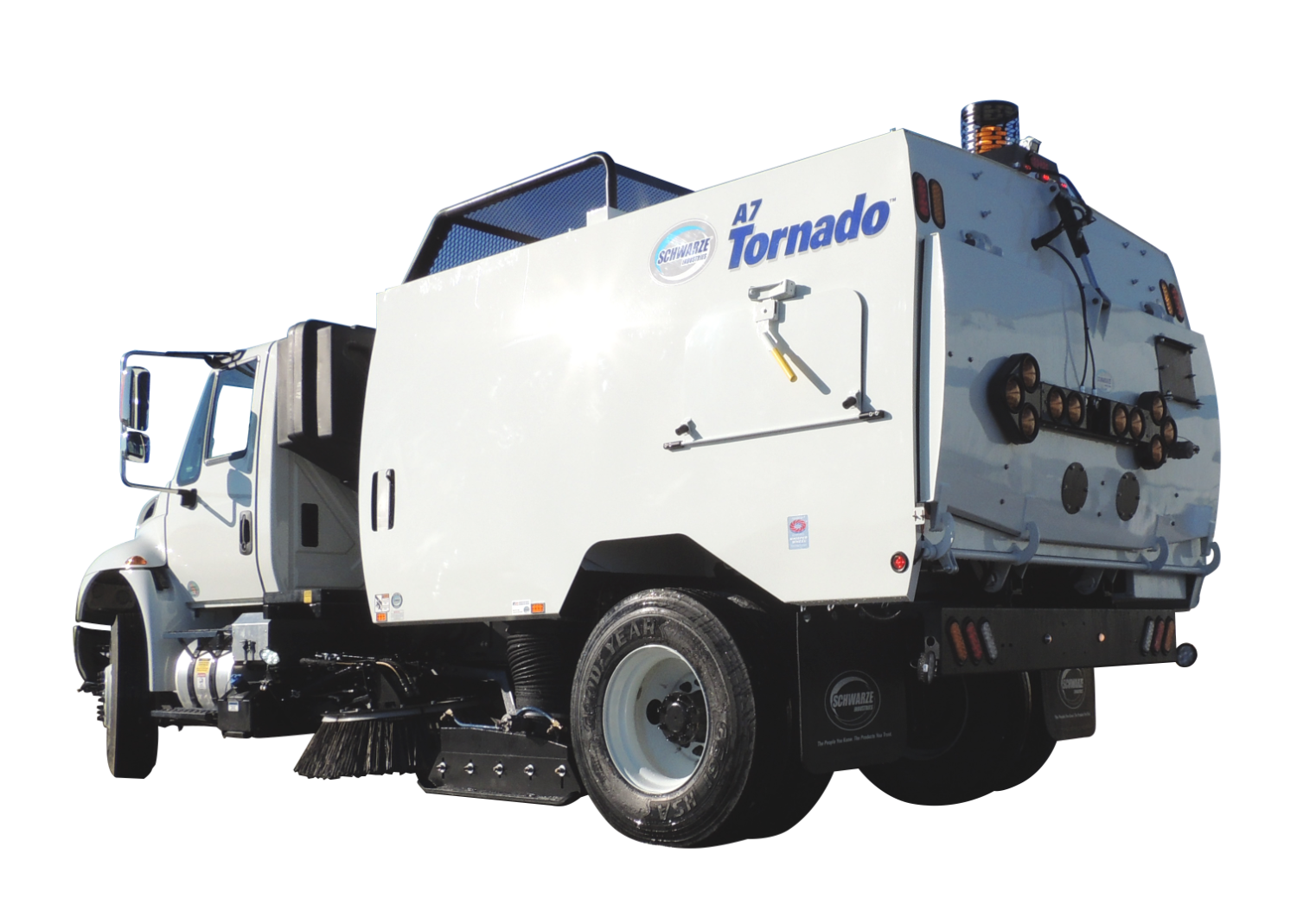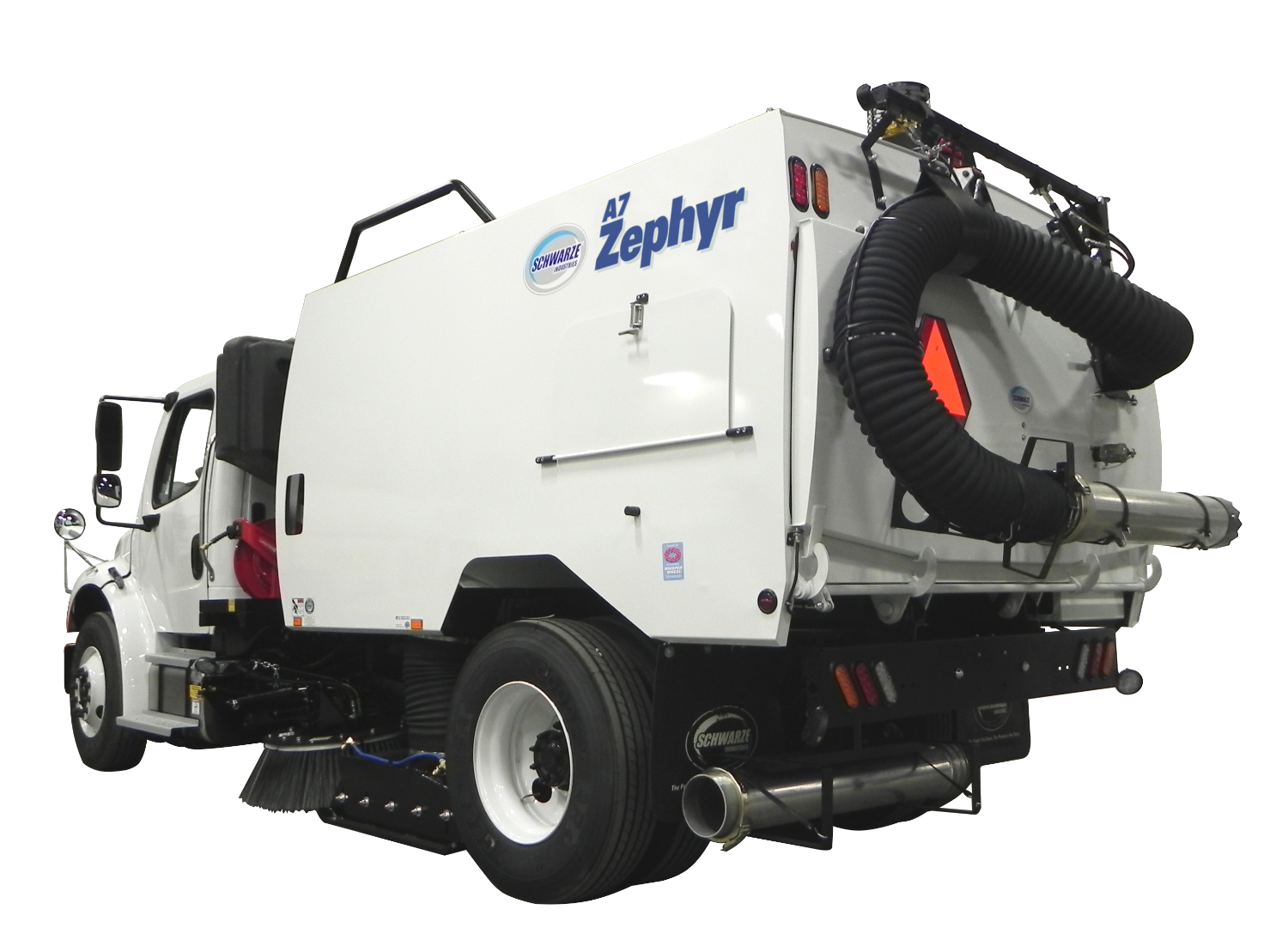Schwarze regenerative air, airport sweepers are used at the world’s leading international airports, military air bases, and small regional airports because they offer the perfect combination of exceptional value, superior performance, and flexibility. With options that include CNG or diesel, high powered magnets for ferrous metals, catch basin vacuum, and side air blast, Schwarze sweepers can be used for multiple airport surface cleaning needs including road sweeping, ramp debris and litter removal, high-speed runway sweeping, high-speed air blast cleaning, glycol removal, wet vacuum behind rubber and paint removal machines, and catch basin vacuuming.
Video Case Study: Airbus Factory
Unlike pure vacuum technology which requires a lot of power and has the potential to exhaust FOD and other debris into the atmosphere, Schwarze regenerative air technology air makes use of both positive pressure and vacuum airflow. Regenerative technology maintains the compressed air in a sealed loop and is not returned to the atmosphere. Instead, the pressurized air is forced across an air knife approximately 2.5 meters wide across the sweeping head. The air knife scrapes the runway surface with sheet of pressurized air, lifting dirt and foreign object debris also known as FOD (TOS = FOD) off the runway surface.

The performance of the Schwarze A7 meets FAA guidelines for removing FOD such as ball bearings, rivets, and other metals at vehicles speeds of 25 KPH ( TOS = 15 MPH). After the air passes through the knife, the vacuum from the blower fan inlet scavenges the blast air and carries it to the containment vessel. This blast and recovery cycle continues indefinitely with no air beyond leakage returning to the atmosphere. The regenerative air has several advantages in that both sides of the blower fan are doing cleaning work. This increases the working efficiency allowing less power use. Regenerative runway sweepers generally only need 100 KW to do the same amount of work as the pure vacuum with 200KW. This results in a significant fuel savings and can also operate with smaller containment vessel size and much less liquid for debris separation. Because of the continuous cycle at a lower airflow, removal of the debris from the airflow is much more efficient and may be accomplished through multiple cycles of regeneration.




